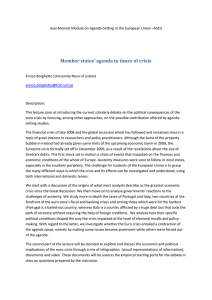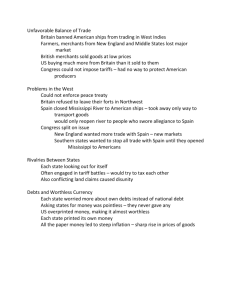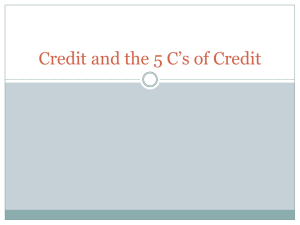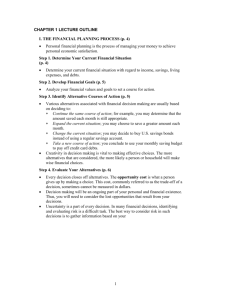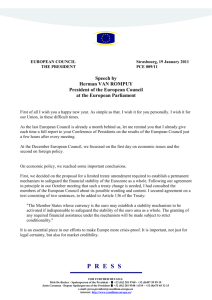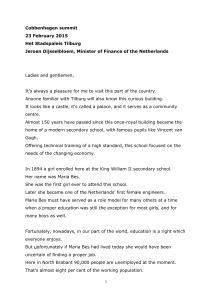Causes and Dilemmas of The Eurozone Crisis
advertisement
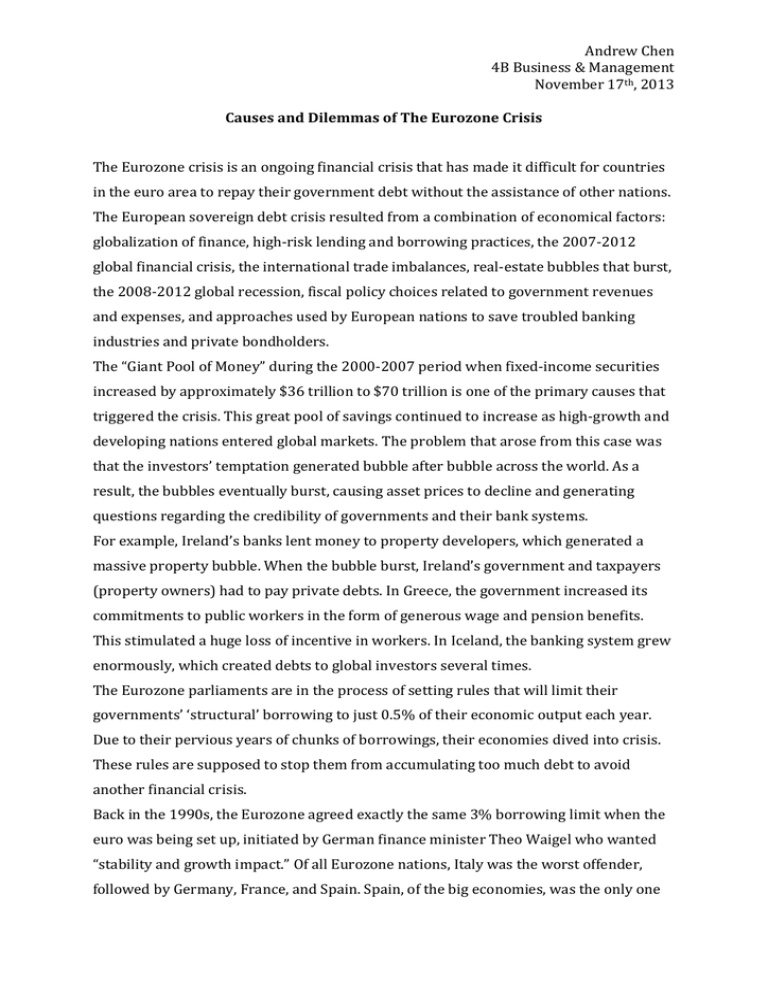
Andrew Chen 4B Business & Management November 17th, 2013 Causes and Dilemmas of The Eurozone Crisis The Eurozone crisis is an ongoing financial crisis that has made it difficult for countries in the euro area to repay their government debt without the assistance of other nations. The European sovereign debt crisis resulted from a combination of economical factors: globalization of finance, high-risk lending and borrowing practices, the 2007-2012 global financial crisis, the international trade imbalances, real-estate bubbles that burst, the 2008-2012 global recession, fiscal policy choices related to government revenues and expenses, and approaches used by European nations to save troubled banking industries and private bondholders. The “Giant Pool of Money” during the 2000-2007 period when fixed-income securities increased by approximately $36 trillion to $70 trillion is one of the primary causes that triggered the crisis. This great pool of savings continued to increase as high-growth and developing nations entered global markets. The problem that arose from this case was that the investors’ temptation generated bubble after bubble across the world. As a result, the bubbles eventually burst, causing asset prices to decline and generating questions regarding the credibility of governments and their bank systems. For example, Ireland’s banks lent money to property developers, which generated a massive property bubble. When the bubble burst, Ireland’s government and taxpayers (property owners) had to pay private debts. In Greece, the government increased its commitments to public workers in the form of generous wage and pension benefits. This stimulated a huge loss of incentive in workers. In Iceland, the banking system grew enormously, which created debts to global investors several times. The Eurozone parliaments are in the process of setting rules that will limit their governments’ ‘structural’ borrowing to just 0.5% of their economic output each year. Due to their pervious years of chunks of borrowings, their economies dived into crisis. These rules are supposed to stop them from accumulating too much debt to avoid another financial crisis. Back in the 1990s, the Eurozone agreed exactly the same 3% borrowing limit when the euro was being set up, initiated by German finance minister Theo Waigel who wanted “stability and growth impact.” Of all Eurozone nations, Italy was the worst offender, followed by Germany, France, and Spain. Spain, of the big economies, was the only one Andrew Chen 4B Business & Management November 17th, 2013 that kept its nose clean until the 2008 financial crisis; the Madrid government stayed within the 3% limit every year from the euro’s creation in 1999 until 2007. There was a big build-up of debts in Spain and Italy before 2008, which had nothing to do with governments. Private sectors, such as companies and mortgage borrowers, were taking out loans. Interest rates had fallen to all time lows in southern European countries when they joined the euro, which encouraged a debt-fuelled drop. During the boom years, wages rose and rose in the south. Italian and Spanish workers face a huge competitive price disadvantage. Indeed, this loss of competitiveness is the main reason why southern Europeans have been finding it so much harder to export than Germany. Government borrowing, which has skyrocketed since the 2008 financial crisis, had little to do with creating the Eurozone crisis in the first place. Spain and Italy are now facing nasty recessions, because neither wants to spend. Companies and mortgage borrowers are too busy repaying their debts to spend more. Governments whose borrowings exploded since the 2008 financial crisis have agreed to drastically cut their spending as well. However, there is a dilemma between spending and not spending. Cutting spending would surely deepen the recession. This would mean even more unemployment (already over 20% in Spain), which may push wages down to more competitive levels. Lower wages will make people’s debts even harder to repay, meaning they are likely to cut their own spending or stop repaying their debts. The country may expect more strikes and protests. On the other hand, not cutting spending would risk a financial collapse. Because European nations are suffering from economic stagnation, markets are liable to lose confidence in these countries. They fear the European economies are simply too weak to support their own ballooning debt load. Work Cited: http://www.economist.com/node/21536871 http://www.neurope.eu/article/reasons-behind-eurozone-financial-crisis
